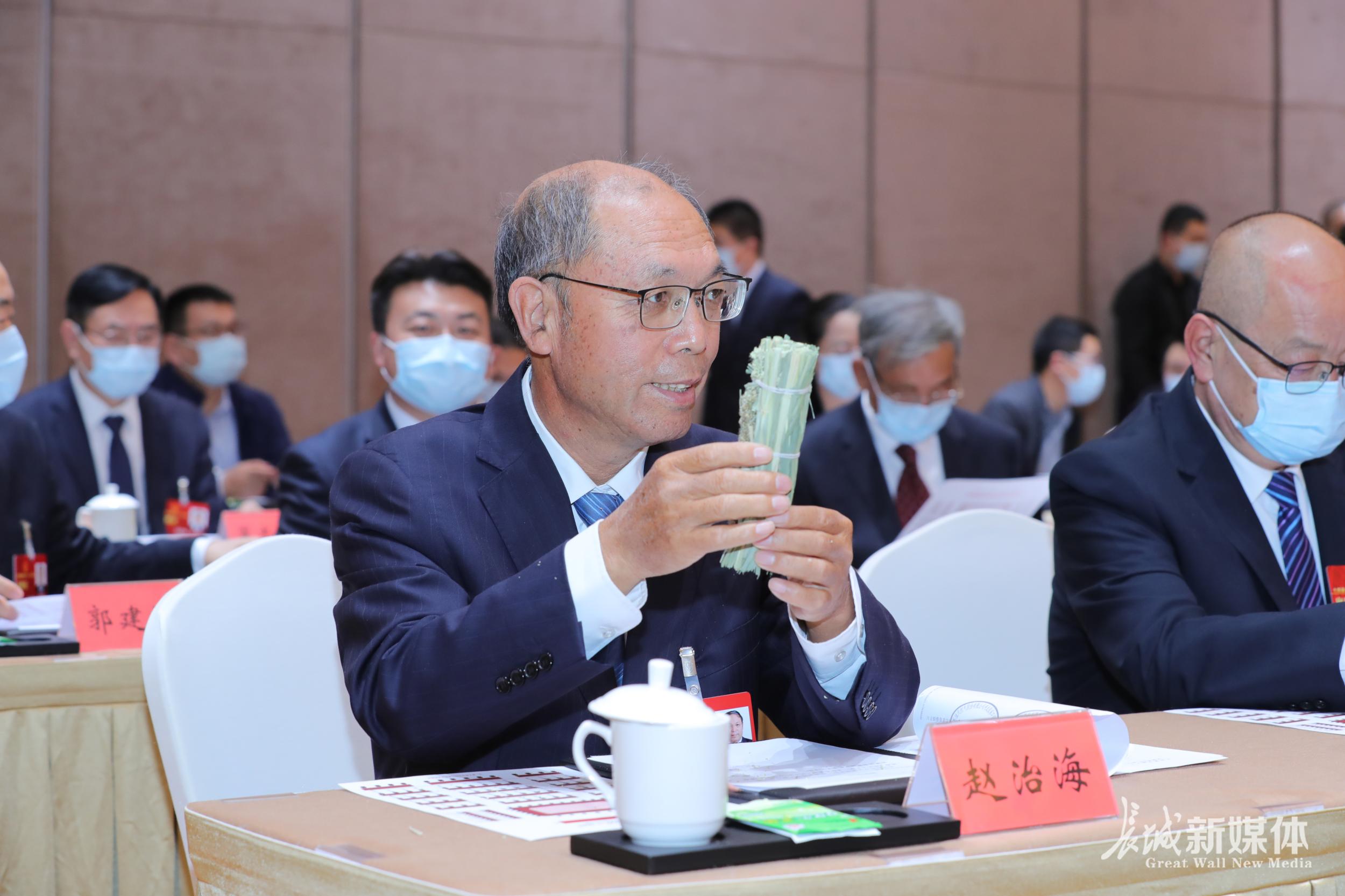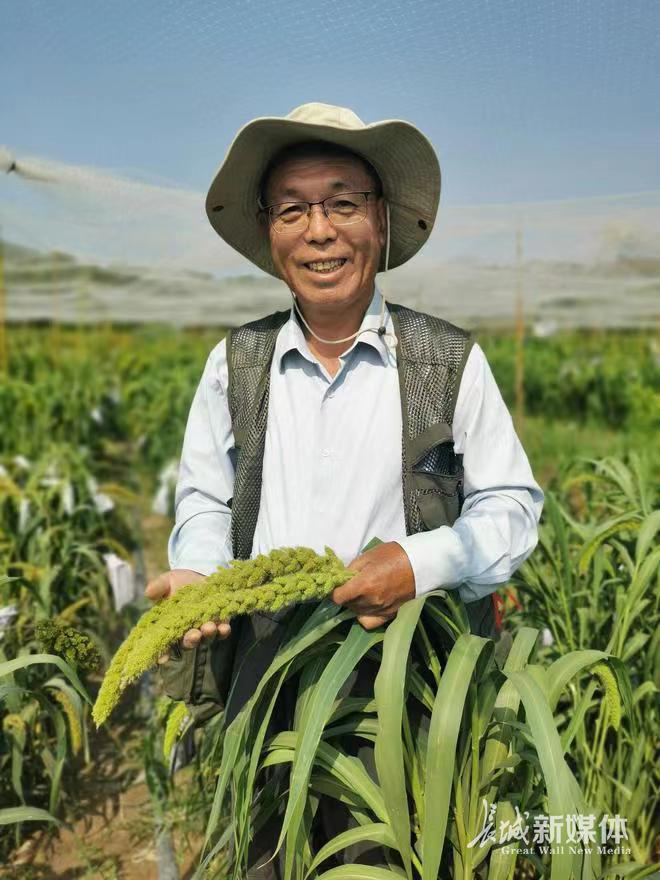
On March 9, Zhao Zhihai, the 64-year-old world-famous agricultural expert shows dry stalks of foxtail millet at the ongoing Two Sessions in Beijing. (Photo by Geng Jia/Great Wall New Media)
On the sidelines of the ongoing Two Sessions in Beijing, an old man carrying dry stalks of foxtail millet is quite eye-catching. For him, millet has become an essential part of his life and he will devote his whole life to the cultivation of hybrid millet.
Having a deep affection for millet, Zhao Zhihai, a 64-year-old world-famous agricultural expert from north China's Hebei Province, is lauded as "the father of hybrid foxtail millet" in China. He has been dreaming of bringing foxtail millet to more countries around the world, and particularly to Africa, where millions of people are caught up in food crises of varying severity.
Foxtail millet, as one of the world's oldest cultivated millet varieties, was originated in China. Millet porridge, as a mild-tasting, nutritious food, is quite popular among Chinese people and is particularly good for pregnant women, infants and sick people.
After graduating from Hebei Agricultural University in 1982, Zhao Zhihai began to develop hybrid millet, and has taken this job as part of his life ever since.
After years of hard work including numerous failures in hybrid millet development, the team led by Zhao eventually discovered the key to producing hybrid foxtail millet in the 1990s and accumulated rich experience in developing the high-yielding, drought-resistant grain.
In 2007, the Zhang Hybrid Millet (or Zhangzagu in Chinese), cultivated by the team, which features high yield, drought resistance and adaptability to otherwise barren soils, reaped a record-high output of 810 kilograms per mu (or 12,150 kilograms per hectare).
In the next year, the UN Food and Agriculture Organization introduced a pilot program to grow this hybrid millet in 10 African countries. So far, the grain has been served for years on the dining tables of many Africans in Ethiopia, Mali, Zimbabwe, Uganda, and Burundi.
By virtue of the "South-South Cooperation" project, Burundi and Uganda now respectively have 2,000 mu (or 133 hectares) and 3,000 mu (or 200 hectares) of farmland growing the hybrid millet, said Shu Xiaoli, managing director of Zoeve Seed Uganda Company Limited.

Zhao Zhihai is showing the millet cultivated by his team in the farmland. (Photo provided by Zhao Zhihai)
Zhao Zhihai said that the hybrid millet is an ideal crop for Africa, as it is tolerant to climate change and suitable for countries with rainy and dry seasons and less fertile soil. Most importantly, it takes a relatively short period of time to ripe, and can well adapt to diverse soil and climatic conditions.
Shu Xiaoli said that they are trying to find ways to turn the hybrid millet into food items in light of the eating habit of Africans and hence expand the sales locally.
Currently, the techniques used to cultivate the hybrid millet have been incorporated into the China-Africa Cooperation Dakar Action Plan for the years 2022-2024.
Hopefully, the crop will help reduce Africans' dependence on food imports and cut average grain prices in their countries, added Zhao.
"China produces 80 percent of the world hybrid millet output, and possesses world-advanced breeding and cultivation techniques," said Zhao.
Zhao said it is a great cause to popularize the hybrid millet in more countries, which can help ease food crisis and benefit local people.
Editor: Song Lifang






